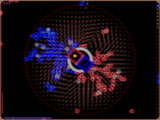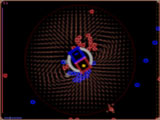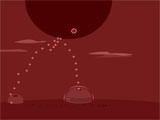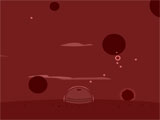Do Whatever You Like in Garry’s Mod
Garry’s Mod began as an independent mod for Half-Life 2. The mod was created by Garry Newman as a more direct way to interact and play with the physics of Half-Life 2. Since its initial release the mod has gained in popularity and moved through multiple versions until it has become what it is today: a pay-ware mod distributed through Valve’s Steam client.
[Note: Check the official site for more videos.]
Sandbox Gameplay
Garry’s Mod is a sandbox game with no goals or expectations. Players are given a huge variety of objects to spawn (ranging from coffee mugs to freight trains) as well as ragdolls and a list of various ways in which to interact with these objects. For example, ropes, pulleys, welds, and different physical properties can all be applied to objects. The game is viewed from the first-person and has both single-player and multi-player modes, each offering different experiences.
Intuitive Interaction
The primary method of interacting with objects in the game world is “the physics gun.” The physics gun, a beam weapon comparable to the proton gun from the movie Ghostbusters, is an intuitive way to interact with objects, and it allows you to move and rotate objects, as well as freeze them in place with ease. This gun behaves exactly how you want it to, and once you’ve gotten used to it, its presence will seem transparent. A second gun, “the tool gun” is used to weld objects together, attach wheels and thrusters, and generally do the majority of the building process.
Garry’s Mod has enough tools and options that there’s no conceivable limit to the things you can make. Even if you run out of things to build, or want to try something different, you can always play with ragdolls, which is inherently fun. Attach them to things, pose them, throw them off of buildings, whatever you want to do with a ragdoll.
User-made Content
It will probably be a long time before you do run out of things to keep yourself occupied, as one of Garry’s Mod’s great strengths is its user expandability. Thanks to the Source SDK, anyone can make new objects, levels, items, and game modes. Garry’s Mod also features Lua scripting, so the amount of new game modes and content is nearly limitless. There are also websites where you can download content from other players. One such website is garrysmod.org. Featuring nearly 10,000 files, it’s seemingly impossible not to find something of interest. One of my personal favorites is the PHX Premium Pack which adds a ton of new spawn items and tools to help further realize your creative visions.
Multi-player
You never know exactly what you’re going to find when you join a multi-player server. From simple building games to stat-based role-playing games to watermelon racing, the experience changes drastically in the multi-player game. It can be extremely rewarding collaborating with others to build a roller coaster, or robot, or whatever else your imaginations dream up. There are, however, downsides to multi-player. First there is no real way to save the game, as there is in single-player. That alone can be a huge problem as servers crash or people leave. More annoying still are people who intentionally crash servers by spawning large objects repeatedly or destroy others’ creations with the remover gun. Many servers have object spawn limits, or Lua scripts to prevent people from interacting with each others’ objects, but this can be detrimental to creativity, when you find yourself unable to spawn enough objects to finish a machine, or unable to work together because of inability to interface your objects with another’s.
Single-Player
While the multi-player mode is a lot of fun, single-player is ultimately where the most of my time was spent. In single-player there are no real limits to what can be done, you don’t have to worry about other people messing with your things, and you can save the game whenever you want. It’s also very rewarding to spend hours building a contraption and be able to save it so you can view it later, or show it off to your friends, or even upload it to the Internet for others to play around with. And you can spend hours and hours just playing with other peoples’ save games and enjoying their hard work. It’s this freedom of play and rewarding feeling you get when you finally finish and get to share with the world that gigantic walking robot, or battle tank, or roller coaster, or whatever you can dream up, that I believe keeps people coming back for more.


(Garry’s Mod Game Screenshots)
Overall
In short, whether you play Garry’s Mod online or offline, there is never a shortage of things to do. If you can remember spending hours building with Legos, you have some idea of the sense of accomplishment that can come from building things in Garry’s Mod. Only this time you’ll be able to experience what it feels like to crash into walls in the firetruck you’ve just spent hours building, or fly through the sky in the airplane you’ve just perfected, rather than just trying to imagine yourself as the little Lego man in the cockpit.
Garry’s Mod costs $9.95 and is available to purchase through Steam.
Related Posts:
Opposites Do Attract: + | –
I have always been astonished by magnetism. To me, there’s nothing like that awed amusement you get when two blocks of metal eerily push each other apart, and sprinkling iron filings near magnets just to see the field lines never loses its charm. So you can imagine how intrigued I was by an arcade-style action puzzle game centered around the theme of magnets.
Attractive Concept
Enter +|- (pronounced plus or minus), in which the player controls a standard bar magnet that can rotate or reverse polarity. The premise is fairly simple: eliminate oppositely-charged particles by causing them to touch. The particles appear randomly and swarm around the magnetic field, gradually drawing closer until they stick to the circle which encloses your magnet avatar. The particles build up into heaps, and if they grow too tall, it’s game over.
Playing in hard mode introduces a new element that drastically affects the game. When you fail to score points in a certain amount of time, a neutral particle is spawned as a sort of punishment. Neutral particles cannot be interacted with, so once they’re stopped, they’re there permanently, unless you make use of the screen-clearing special attack.
Repulsive Implementation
The problem with +|- is that there is little sense of control and little room for strategy. It’s not frustrating per se, just overwhelming. At first, I thought the pace of the game was too slow — almost boring. Very suddenly, I found myself at the mercy of an onslaught of particles: building up piles on opposite sides, switching the polarity, and hoping for the best. The action in +|- is all-or-nothing, and simply seems too luck-based.
The vector field your magnet generates is visible, but it really doesn’t help: we just don’t have the instinct built up to easily understand magnetism. Vector fields are not something most people deal with in the everyday world, and as a consequence, the physical nature of +|- does not lend itself to intuition as readily as other games. This alone isn’t a bad thing; in fact, I usually think it’s fascinating when a game requires me to adapt to a strange new world. In this world, though, the element of control feels weak: it sometimes seems like I might as well be spinning the magnet around randomly for all the good it’s doing. (Of course, I concede the possibility that I’m just really bad at the game.)
Neutral Rating
+|- isn’t unplayable, but it could certainly use a little polish — a wishy-washy term, I know, but it’s difficult to pin down what +|- lacks. Perhaps something as simple as slowing the motion of the particles could allow for more thinking and less reflexive gameplay, or perhaps a series of levels could be added featuring multiple magnets in different configurations. It feels like +|- could be so much more than it is. For the time it took rale and co. to develop, +|- is something to be proud of, but you probably won’t see it becoming a smash hit anytime soon.
Download +|- (4.05 MB)
[via the Experimental Gameplay Project]
Related Posts:
Defend Your Monochromatic Turret in Red
Red is a wonderfully simple game using realistic physics to take the Missile Command concept to a new level with a greater suspension of disbelief and emotional intensity. You can find Red floating around any number of flash gaming sites, but it is oddly missing from Armor Games (the game’s credited source).
Simple Concept Goes a Long Way
I really appreciate the simplicity of Red because its physics inherently produce room for strategic thought. The player uses the mouse to blast small balls from a round turret at much larger balls hurtling downward from the sky. Each interaction between your “bullets” and the slowly approaching “meteors” applies realistic physics, bouncing the bullets out in different directions and pushing the oncoming meteors up and away. Just selecting the part of a meteor to shoot is a challenge when you only have a fraction of a second. Also, the chaotic spray of bouncing bullets can be used to your advantage when they bounce off of one target and into another. This suggests an interesting multi-tasking element when you must blast 2 or 3 meteors at the same time, but the concept is mostly unexplored.
Massive Impact
After 30 seconds or so, power-ups will show up, allowing you to obtain a force field, supporting turrets or (my personal favorite) extra heavy bullets that pound the sky clean and ricochet into the ground, leaving dark, gaping holes. Those slugs really demonstrate the effect physics can have on a game experience. Each physical interaction lets you know you’re not just hurling a bunch of pixels, you’re packing mass! This is what separates Red from a non-physics game like Missile command.
Unexercised Variety
Occasionally, a particularly gargantuan ball will arise, marking the end of a phase and the beginning of a greater difficulty level. Just as one would expect, higher levels mean more and faster balls to shoot, but they’re also the harbingers of new wind-speeds. Changing wind effects keep things dicey, forcing you to compensate for the curvature of your bullets’ trajectories. Unfortunately, that’s when the game’s variety peters out, which is disappointing because a great deal of even simple possibilities were ignored (like meteors with less predictable trajectories, a moving turret or zooming out to shoot at longer ranges). After a few minutes of play you’ve seen all that’s worth seeing and you’re probably just hoping you’ll die an honorable death at the hands of a meteor instead of exiting the game like a coward. That’s a place I never like to be.
10% of a Great Game
Overall I found Red to be a really fantastic basis for a game, but it feels more like a demo than a full experience. Click the “About” button and the mysterious creator, ” Case,” suggests Red is the beginning of a series of chromatically named games. Orange was the only one I could find available and I wasn’t impressed.
Red is free so give it a go, but don’t expect to be entertained for longer than a few minutes. Let’s hope our friend Case has some new concepts up his sleeve for the next project. He demonstrates an excellent use of the mouse interface and basic physics to produce an intuitive and entertaining game.
Play Red Online (Flash required)
Related Posts:
- No related posts


 (Rate this game! 1,963 votes, average: 4.24 out of 5)
(Rate this game! 1,963 votes, average: 4.24 out of 5)




 My name is Matthew Wegner, and this site is dedicated to physics games.
My name is Matthew Wegner, and this site is dedicated to physics games.